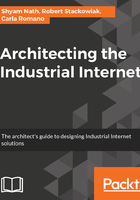
Challenges to IIoT
As always seems to happen when a new generation begins, there are some holdover problems from the old generation as well as problems introduced by the new architecture. One carryover from the previous generation is the need for projects to be driven by line of business requirements, not by IT. As it was earlier, projects will usually stall when IT-initiated proof of concepts do not really solve problems that the business needs and wants to address.
In Industrial Internet projects, architects and IT must also sometimes work with engineering designers who are specifying the types and locations of sensors in devices to assure that data needed for the proposed solution can be gathered. Similarly, these teams need to work together regarding networking requirements given the amount of data that might be transmitted. Continuous data gathering from equipment operated in industrial settings is key to enabling maintenance and field services-related solutions.
The mixture of semi-structured and unstructured data and the variety of data management solutions needed introduce complexity and the need for new skill sets that an organization might not possess and face difficulty in finding. Further adding to the complexity is the rate at which data is transferred over networks arriving in the data management engines and the data volumes that must be managed in them.
Of course, device and data security must be maintained throughout the ecosystem. Software and firmware updates that are pushed to intelligent sensors and devices must be secure and successful, or denied. Data transmitted to cloud-based solutions must meet or exceed industry-relevant certifications and country data sovereignty and privacy laws.
External threats can exploit vulnerabilities in under-protected Industrial Internet systems and thereby cause harm to the organization owning the assets and the associated business processes. Such concerns led to an increased focus on solving these security risks and adopting the emerging standards.